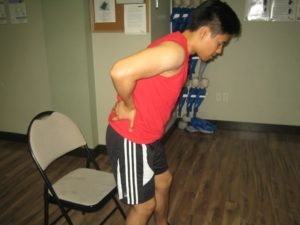A hip pointer is basically a deep bruise on one the upper part of the pelvis that can manifest on either side of the waistline. Hip pain is the distinguishing characteristic of this injury.
This is considered as a painful injury that can put an individual out of track for days or even weeks if not taken care of properly or rushing back to activity before it has fully healed. Remember that this injury is hard to manage since the strong muscles that attach place constant strain on the area.
How hip pointer develops
A hip pointer is due to a direct blow to the upper part of the pelvis or iliac crest. This injury can occur with a direct blow during contact sports or when an individual falls and strikes the surface hard.
Who are at risk?
Individuals who engage in contact sports particularly those who do not use proper gear with protective padding face the highest risk for ending up with hip pointer. Football players face the highest risk since they often get hit by the shoulder pads or helmet of the opponent or hit the ground hard.
Other sports that can put an individual at risk for hip pointer include soccer, hockey, as well as lacrosse, rugby, cycling and even skiing.
What are the symptoms?
- Sudden discomfort or soreness on the superior outer region of the iliac crest due to falls or a direct blow.
- Limping
- Pain in the hip that becomes severe during certain movements such as running, jumping, twisting motions or bending.
- Inflammation in the upper region of the hip
Hip pain that becomes worse during certain activities such as jumping, running, bending or twisting. - Possible swelling or bruising
- Diminished range of motion at the hip joint
- Muscle spasms starts to occur in the hip region
Initial treatment
The individual should rest for 24-48 hours in order to prevent further damage. Always bear in mind that this injury requires time to heal. You can reduce the discomfort by applying an ice pack for 15-20 minutes at a time at 3-4 times during the initial 24-72 hours. Remember not to apply the ice pack or cold compress directly on the skin. It should be covered with a clean towel or cloth.
It is important to note that the hip should be moved to prevent it from becoming stiff and lose range of motion. Just make sure that movement must be pain-free. Do not forget to protect the area with padding when the individual returns to sport so that irritation to the area can be prevented.
The pain from a hip pointer can last for a number of weeks. Each individual recovers from the injury at a different rate, thus resuming training is usually determine by how soon the hip recovers, not by the time period it has been since the injury occurred.

